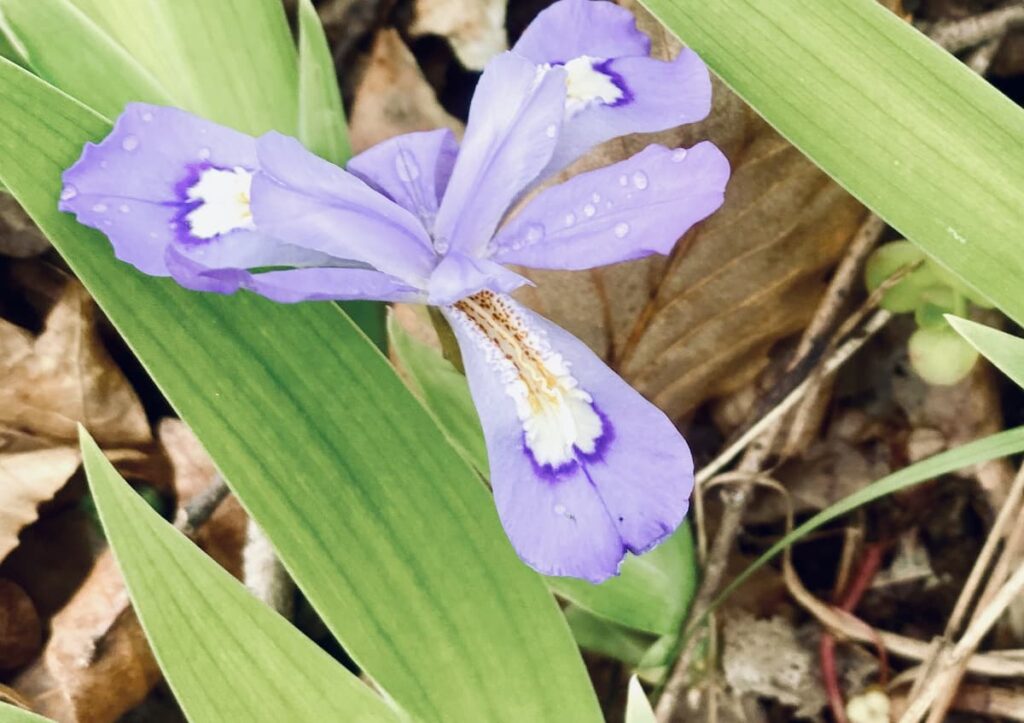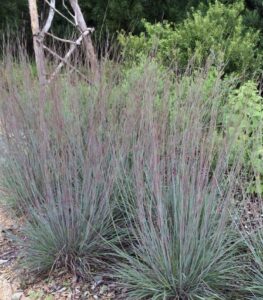
Hello garden lovers! Arielle McIntyre here, co-creator of the Placemakers Academy of Garden Design and part of the design team at Dargan Landscape Architects. This growing season was my first opportunity to help manage installations, and do more hands-on planting design for clients.
Outside of our installations, I was able to attend a series of plant walks hosted by local plant nerd and story teller extraordinaire Adam Bigelow. If you live in or visit WNC we highly recommend treating yourself to one of his walks. You will love it! You can check out Bigelow’s Botanical Excursions here.
With all of this juicy knowledge from this last season, I had to share some of what I learned with all of you. So here we go with:
What I Learned: Part II
My New Favorite Plants for Mountain Landscapes
(If you missed “Part I: Field Notes”, you can find it here)

#1
Dwarf crested iris
Iris cristata

Dwarf crested iris
Iris cristata
If you’re looking for a lovely ground cover, look no further than dwarf crested iris. These gorgeous purple blooms parade in springtime, and then leave behind a gorgeous tapis vert, a green tapestry.
Designers often use grass to create a tapis vert, but there are other plants you can use to create the same design effect that have a role to play in supporting your local ecosystem (Which as we all know, can use all the help it can get!).

#2
Blazing star liatris
Liatris spicata


Blazing star liatris
Liatris spicata
When I first found out this plant was native, I couldn’t believe it! It’s just very showy and over the top, with tall brilliant purple stalks of flowers. I was visiting with a client after an installation of the pocket garden shown, we were looking down from her deck at the new garden, and humming around the newly planted liatris was the sweetest hummingbird- just loving it!
She said that was the first time she had ever seen one there, so it felt like a blessing of the garden from the sweet hummingbird. If you want to see your garden a buzz with bees, native butterflies, and hummingbirds, plant some liatris this spring!

#3
Joe Pye Weed
Eupatorium purpureum
 |
Joe Pye Weed
Eupatorium purpureum
Many of you know Joe Pye weed from its towering stalks in the summer time along roadsides. It’s also called queen of the meadow, as it sits with its royal purple crown higher than all the other wildflowers. Sometimes on a misty mountain morning, the stalks are so beautiful the purples and greens look almost iridescent. Native pollinators love this plant too, and it is low maintenance to the max.
For the full size plants, you can plant them along the bottom of a wall, where they can peak up, or at the back of a planting design like your tall friend in the back of a photograph.

#4
Little Bluestem “The Blues”
Schizachyrium scoparium
 |
Little Bluestem “The Blues”
Schizachyrium scoparium
These elegant grasses have a kaleidoscope of changing blue, green, and purple stalks throughout the summer, and in the fall- reds, copper, and orange hues. It’s texture is a nice contrast to other landscape plants, so it brings a lot of textural dimension.
You can plant it in the drier, sunnier spots of your garden like along roadsides and verges- it is highly drought tolerant. Plus, it is a lovely nesting and food source for native wildlife and pollinators.

#5
Coral honeysuckle
Lonicera sempervirens

Coral honeysuckle
Lonicera sempervirens
I am obsessed with this plant. Your hummingbird feeders that you have to clean out and replace with sugar water- well you never have to do any of that ever again and you can have the greatest hummingbird feeder money can buy- Coral honeysuckle.
This is a native honeysuckle, unlike the Japanese honeysuckles, and will play an important part in your local ecosystem. This plant vining grows even in poor soil, and will establish without much fuss. It is the perfect plant for vining up a trellis, along a deck railing, or along a locust fence for the most charming hummingbird buffet you can imagine.

#6
Cinnamon fern
Osmunda cinnamomea
Cinnamon fern
Osmunda cinnamomea
I’m a fern fanatic. I love planting them in little pockets in rock terraces, using evergreen varieties for winter interest, and using showy varieties as powerful design forms in a rhythm. One of those showy varieties is the Cinnamon fern.
They open up to 3’-4’ tall frond fireworks in spring, and can even get as tall as 5’ with ideal growing conditions. They get their name from their fuzzy cinnamon stick like centerpiece. This centerpiece just adds to the drama of this fabulous fern.

#7
Mountain laurel
Kalmia latifolia
Mountain laurel, “Sarah”, “Olympic Fire”, “Pink Charm”
Kalmia latifolia
Just like ferns establish such a strong sense of place in a design, so does our beloved mountain laurel. This plant used to be called and is still called Ivy by many mountain folks- hence names like Big Ivy. We love planting full size mountain laurels along the edges of the wood line with some sun where they can be large and in charge.
In garden beds however, we like to use dwarf varieties of mountain laurels in a variety of colors to give a showy display of color in the summer without overtaking more petite garden beds and spaces.

#8
Ninebark “Tiny Wine” & “Ginger Wine”
Physocarpus opulifolius
Ninebark “Tiny Wine” & “Ginger Wine”
Physocarpus opulifolius
I love nine bark for its rich wine colored foliage, and its pretty light pink and white blooms are an extra treat. It adds so dimension and richness to a planting design.
“Tiny Wine” is a nice dwarf variety, and “Ginger Wine” has a deep pinot noir purple. The full size plants can get huge, 8-10’ tall, and the dwarf varieties are more like 3-5’ tall.

#9
Virginia willow
Itea virginica
Virginia willow
Itea virginica
This plant has sweet fragrant white flowers in the spring, but my favorite part is the rich red tones of its foliage in fall. In Fall, its gorgeous red leaves play off of the red tones in redbuds and maples.

#10
Redbud “Rising Sun” & “Flame Thrower”
Cercis canadensis
Redbud “Rising Sun” & “Flame Thrower”
Cercis canadensis
Just like dwarf mountain laurel, these are staples of our design vocabulary. Redbuds are such romantic trees, with their sweet pink spring buds and their delicate heart shaped leaves that dance in the wind.
Their foliage comes in so many striking colors, from chartreuse and golden yellows, to rich oranges and reds, these trees are strong in form and in color. They make a great rhythmic anchor for a planting design.
I hope you’ve enjoyed some of these morsels from what I learned this last season, and I wish you and your garden all of the best in the new year!
